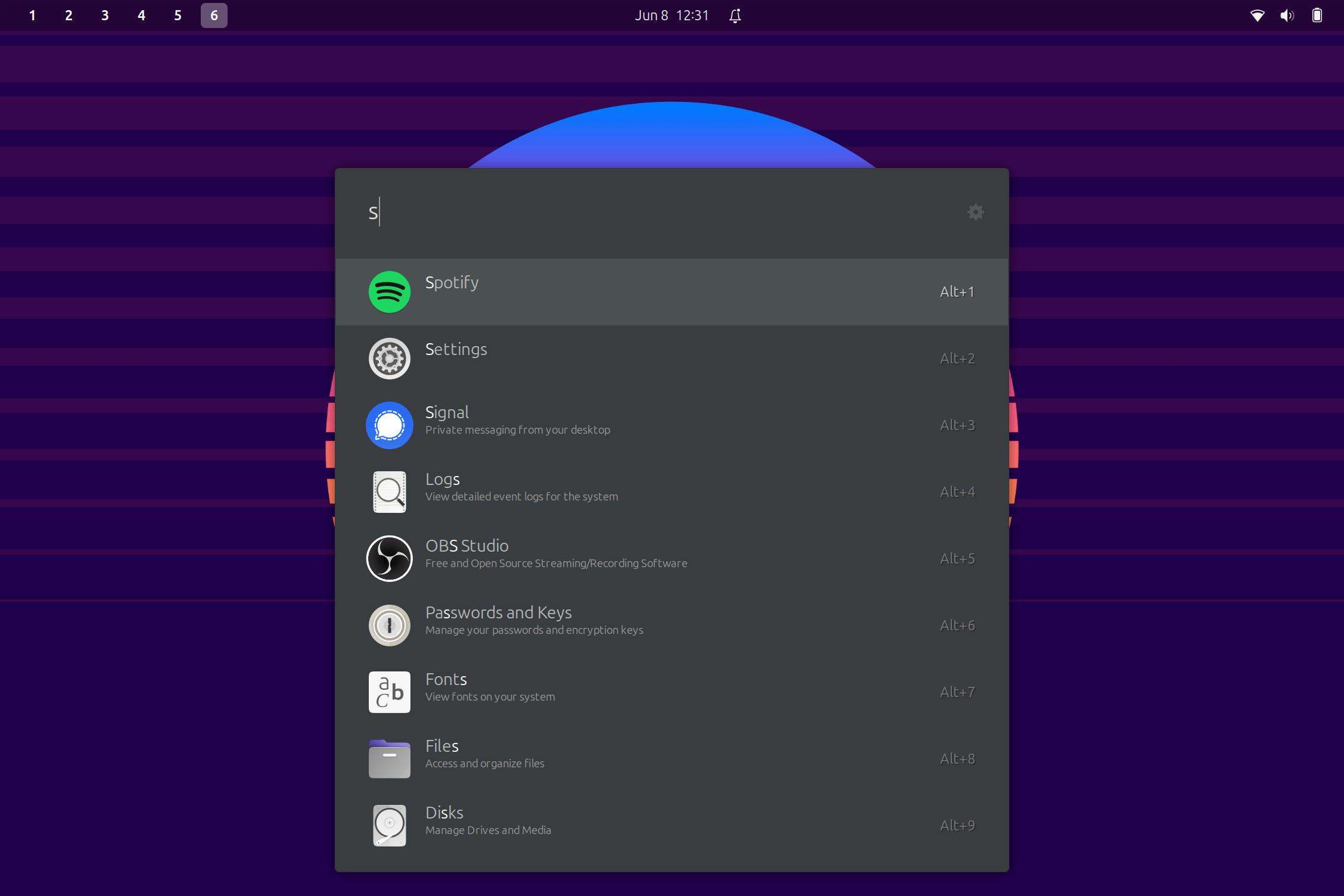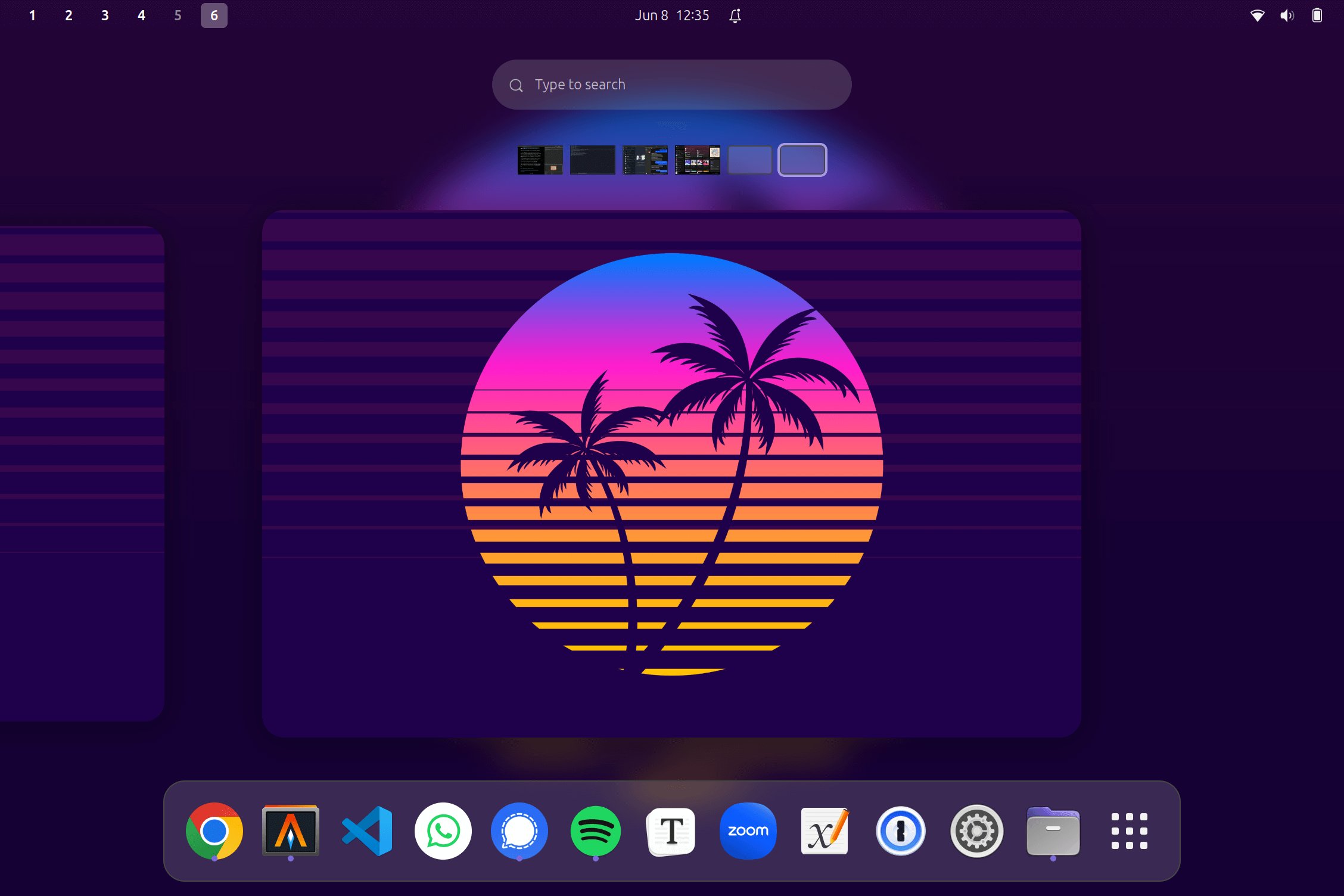Navigation
Omakub is designed to be used with the keyboard. There are a lot of hotkeys to learn, though, so don't worry if you have to reach for the mouse a few times in the beginning. But by the end of your training, you'll be flying through workspaces, tiling windows, and starting apps exclusively with the keyboard. It's really fast and really fun.
Note: You'll see a lot of references to the Super key. That's the general name for the Windows key or the Command key. Some keyboards have the Windows logo on it, some have CMD, some have the Apple command sign. It's all the same.
Workspaces
There are six preconfigured workspaces. On a small laptop screen, you're recommended to keep only one application, or two at the most, visible on each workspace. Then you navigate between them using the Super + 1/2/3/4/5/6 hotkeys. Since Omakub has no animations, the switching is instant.
You should get in the habit of leaving the same application on the same workspace, so you can build up muscle memory for quick navigation. For example, here's how you could do it:
| # | Purpose | Program(s) | Hotkey |
|---|---|---|---|
| 1 | Browsing | Chrome | Super + 1 |
| 2 | Programming | Terminal | Super + 2 |
| 3 | Communication | Signal + WhatsApp | Super + 3 |
| 4 | Music | Spotify | Super + 4 |
| 5 | Writing | Typora | Super + 5 |
| 6 | Misc | Whatever | Super + 6 |
If you're running a program on one workspace, but want to move it to another, you press Shift + Super + N where N is the number of the destination workspace.
Applications
There are three ways to start or focus an application in Omakub:
- Press
Alt + 1to start the first application in the dock (Chrome, by default),Alt + 2to start the second (Terminal), and so on. If the application is already open, it'll receive focus. - Launch any application using Ulauncher by pressing
Super + Spaceand typing the name of the application. Once found, press return. - Press
Superto reveal the dock, then use the mouse to start the application. You can see every application installed on the system by clicking on the Show Apps icon at the very right.
You can always close an application using Super + W.
If you already have Chrome running on one workspace, but want to add a new instance on another workspace, press Shift + Alt + 1. You can do the same with the terminal using Shift + Alt + 2.
This is what Ulauncher looks like in action:
This is what the revealed dock looks like:
Chrome
The best way to run Chrome on a small laptop display, as with most applications, is in full-screen mode. You do that by pressing Shift + F11. Pressing that again will take it out of full-screen mode. You can navigate between your tabs using Ctrl + Pgup/Pgdown or jump directly to a tab, counting from the left, using Ctrl + 1/2/3/....

